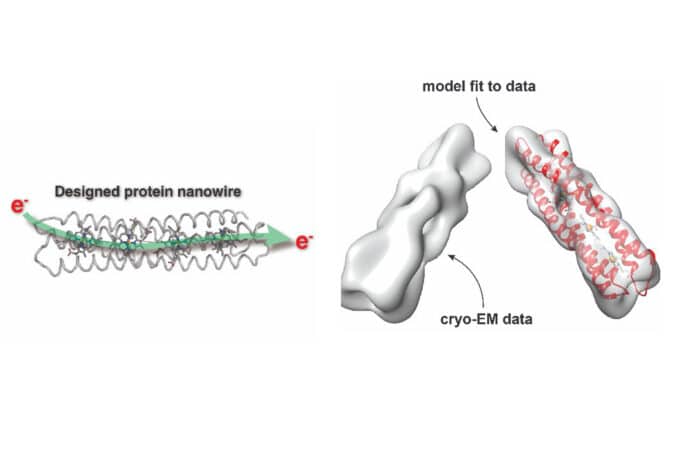Life depends on the movement of electrons through protein-based circuitry, which is what powers photosynthesis and cellular energy production. Although the developments of the structural genomics era have helped us better comprehend this natural electron-conducting machinery, we have yet to completely utilize the extraordinary qualities of these bioelectronic parts and assemblies on our terms.
A new study by the University of Bristol recently demonstrated how to make conductive, biodegradable wires from designed proteins. They have created a unique microscopic toolkit of ‘green’ tuneable electrical components, paving the way for a new generation of bioelectronic devices and sensors.
The biological machinery that produces energy in all living species and typical electrical components composed of copper or iron may be compatible with their toolbox.
The tiny wires are a thousandth of the width of the finest human hair or the size of transistors on silicon chips. They are entirely composed of heme molecules, which are present in proteins like hemoglobin, which carries oxygen in red blood cells, and natural amino acids. They were produced using harmless microorganisms, eliminating the need for potentially difficult and environmentally harmful processes often employed in manufacturing synthetic compounds.
Scientists used advanced computational tools to design simple building blocks that could be combined into longer, wire-like protein chains for conducting electrons. Using techniques that allow for the most detailed structural viewing, such as protein X-ray crystallography and electron cryo-microscopy (cryo-EM), they could see the structures of these wires. Images of the tiniest individual protein ever analyzed were acquired using this method, pushing the technical limits of cryo-EM.
In the end, these nanoscale designer wires have the potential to be utilized in a variety of applications, such as biosensors for the detection of toxins in the environment and diseases.
Additionally, this invention will serve as the basis for novel electrical circuits that can be used to make customized catalysts for green industrial biotechnology and synthetic photosynthetic proteins that can be used to harvest solar energy.
Co-author Adrian Mulholland, Professor of Chemistry at the University of Bristol, said: “These proteins show how protein design is increasingly delivering practically useful tools. They offer exciting possibilities as components for engineering biology and are great systems for investigating the fundamental mechanisms of biological electron transfer.”
Lead author Ross Anderson, Professor of Biological Chemistry at the University of Bristol, said: “While our designs take inspiration from the protein-based electronic circuits necessary for all life on Earth, they are free from much of the complexity and instability that can prevent the exploitation of their natural equivalents on our terms. We can also build these minute electronic components to order, specifying their properties in a way impossible with natural proteins.”
Journal Reference:
- George H. Hutchins, Claire E. M. Noble, H. Adrian Bunzel, et al. An expandable, modular de novo protein platform for precision redox engineering. PNAS. DOI: 10.1073/pnas.2306046120
